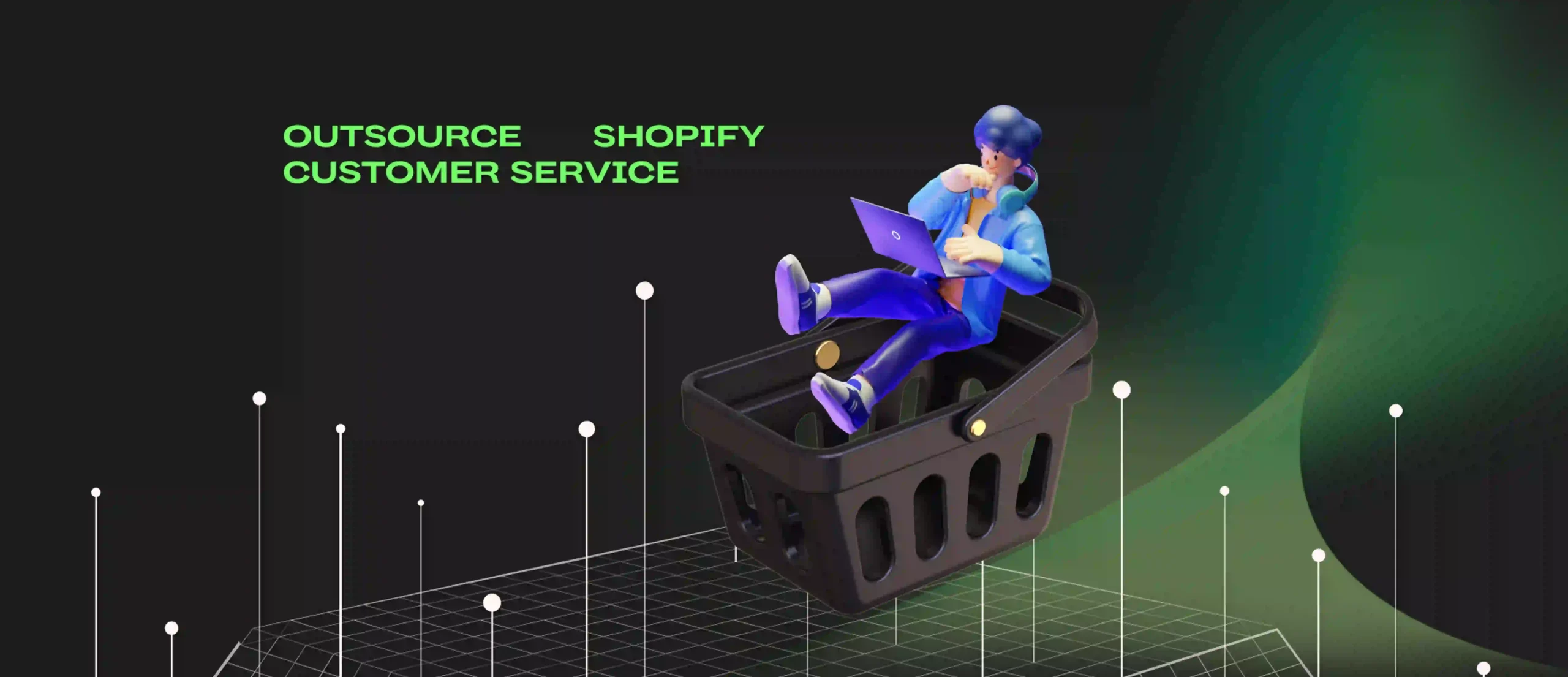B2B E Commerce Development: Website Guide 2024
- What is a B2B ecommerce website?
- Benefits of a B2B Ecommerce website development for your business
- Differences between B2B and B2C e commerce websites
- Top 5 best B2B Stores in the USA:
- 1. WooCommerce
- 2. Shopify
- 3. Magento
- 4. Laravel (CMS October)
- 5. BigCommerce
- Stages of developing a B2B e-commerce website
- B2b Ecommerce Best Practices:
- Cases of the Best Ecommerce Websites
- B2B e-commerce development trends
What is a B2B ecommerce website?
A B2B online store is a digital space where businesses buy and sell products or services. It’s different from a B2C (business to consumer) site, which targets individual customers. Here, companies like wholesalers, manufacturers, and distributors interact.
These sites offer special features for business buyers. They include customized pricing, bulk orders, contract talks, and connections to systems like OMS and CRM.
Benefits of a B2B Ecommerce website development for your business
- B2B websites offer the opportunity for your business to reach a broader audience of potential customers beyond traditional geographical boundaries. Having an online presence allows companies to tap into new market segments, expand their customer base, and capitalize on emerging opportunities in the global marketplace. It is an excellent chance to package your business to meet all your expectations completely.
- With business-to-business e-commerce platforms, businesses can streamline procurement processes, automate order management, and optimize other business processes, leading to increased efficiency and productivity.
- By offering 24/7 availability, businesses can cater to the needs of customers in different time zones and ensure seamless transactions anytime, anywhere, significantly boosting online sales.
- By leveraging data analytics with special tools, companies can identify opportunities for growth, optimize pricing strategies, and enhance customer engagement to drive revenue and profitability. Enhancing customer engagement also leads to higher customer satisfaction.
- Whether expanding product offerings, entering new markets, or integrating new technologies, these platforms can scale to meet the changing needs of businesses and support long-term growth objectives.
Differences between B2B and B2C e commerce websites
While both B2B and B2C e-commerce sites ease online transactions, they cater to distinct audiences and serve different purposes, leading to several key differences:
| Criteria | B2B E-commerce Websites | B2C E-commerce Websites |
| Target Audience | Businesses and professionals. Focuses on bulk orders, negotiations, and establishing long-term relationships. | Individual consumers. Emphasizes convenience, personalization, and impulse buying. |
| Sales Process | Involves complex sales cycles, customized pricing, and negotiations. Requires robust order management systems and CRM integration. | Tends to be shorter and more direct. Consumers make buying decisions based on price, product quality, and brand reputation. |
| Purchasing Process | More complex, involving multiple stakeholders and longer B2B sales cycles. | Relatively straightforward with individual buying decisions. |
| Product Catalog | Features extensive product catalogs with detailed specifications, pricing tiers, and quantity discounts. Offers custom pricing and volume-based discounts based on negotiated contracts. | Prioritizes product presentation, customer reviews, and recommendations. Focuses on visual appeal and user experience. |
Top 5 best B2B Stores in the USA:
1. WooCommerce
WooCommerce is a well-liked plugin for WordPress. It helps businesses build customizable and scalable online stores. Its easy interface and many plugins make it . Businesses can tailor their stores to their needs. WooCommerce provides strong inventory control, works well with different payment systems, and offers many customization choices. This makes it good for any size and type of business.
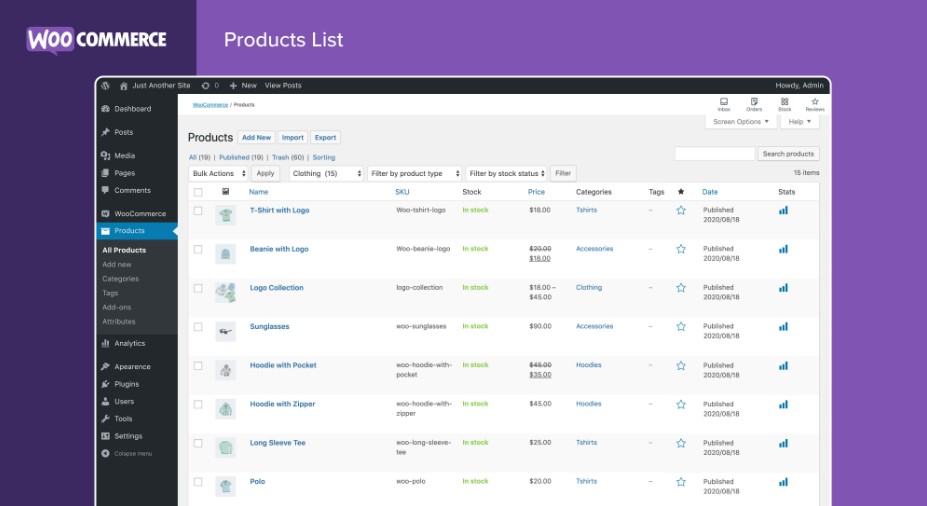
Key Features of WooCommerce:
- Seamless Integration: It is important to note that WooCommerce is a popular ecommerce platform that integrates seamlessly with WordPress. It enables merchants or businesses to use the most known CMS globally for managing and making sites.
- Customization Options. When it comes to customization options, the number of plugins and themes found in WooCommerce is unmatched. Allowing business people to create attractive e-commerce sites that are customized according to their brand.
- Scalability. WooCommerce has been designed so that its scalability will depend on how much a business wants it to grow. The plugin can accommodate an infinite number of products, categories, and users while launching a new online store or expanding an existing one.
2. Shopify
Shopify is a comprehensive platform that helps businesses build and run online stores. It provides an easy-to-use interface, customizable templates, and marketing tools. This allows companies to create professional websites without needing technical skills. Shopify also supports selling across various channels. Businesses can sell on social media, online marketplaces, and in physical stores using one dashboard.
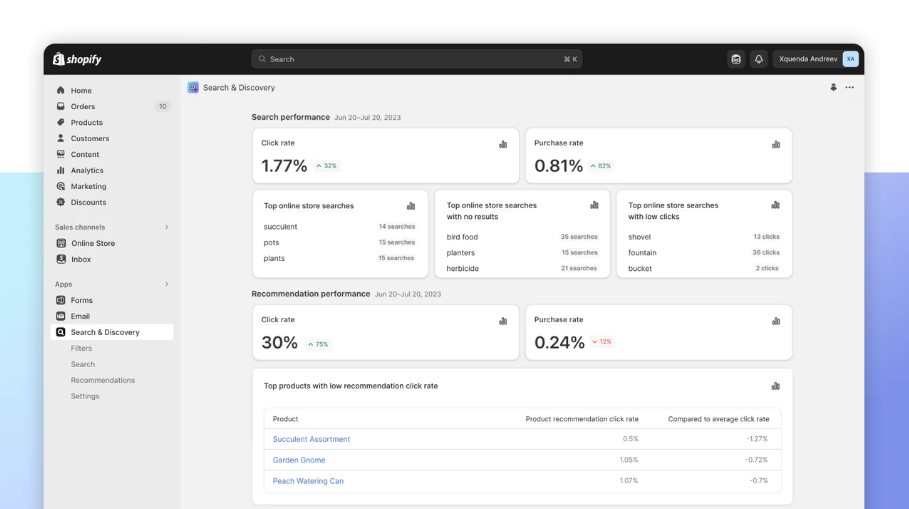
Key Features of Shopify:
- Customizable Templates. Shopify offers a wide range of customizable templates and themes, making it one of the leading B2B ecommerce platforms. This allows businesses to create stunning e commerce web sites that reflect their brand identity and resonate with their target audience.
- Built-in Marketing Tools. Shopify offers built-in marketing tools. These include email marketing, social media ads, SEO, and abandoned cart recovery. These tools help businesses attract and keep customers. They also boost sales and grow online visibility.
3. Magento
Magento is an open-source e-commerce platform that is flexible and scalable. It offers advanced features and a strong architecture. With Magento, businesses can customize their online stores to meet their unique needs. They can create feature-rich websites that are tailored specifically for their requirements.
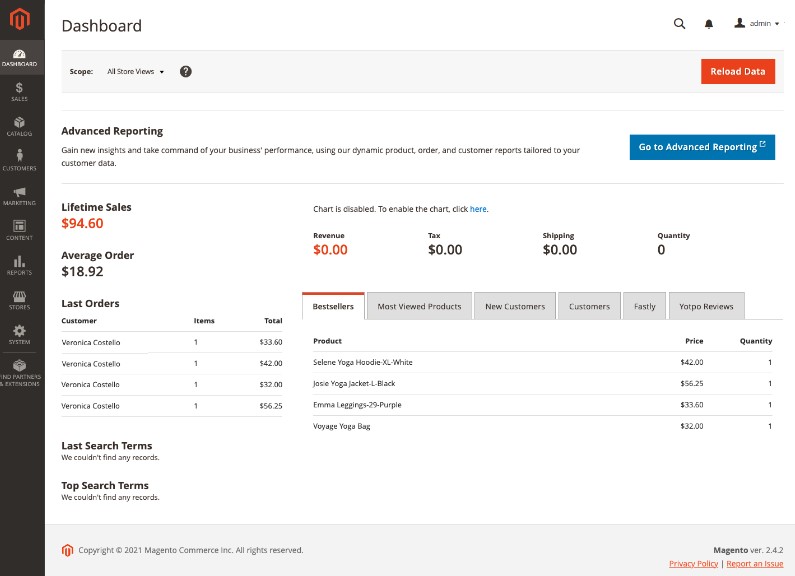
Key Features of Magento:
- Customization Flexibility. Magento’s modular architecture and extensive customization options allow businesses to create customized e-commerce websites tailored to their unique requirements, from small online stores to enterprise-level site platforms.
- Magento offers advanced SEO features, including customizable URLs, meta tags, and sitemaps.
- With support for multiple storefronts, languages, and currencies, Magento provides scalability and flexibility to accommodate business growth and expansion into new markets.
4. Laravel (CMS October)
Laravel is a modern PHP framework. When used with the CMS October, it offers a strong solution for building high-performance websites. This platform ensures excellent security, allows easy integration with external APIs, and supports custom development. It’s perfect for businesses that have specific needs and technical demands.
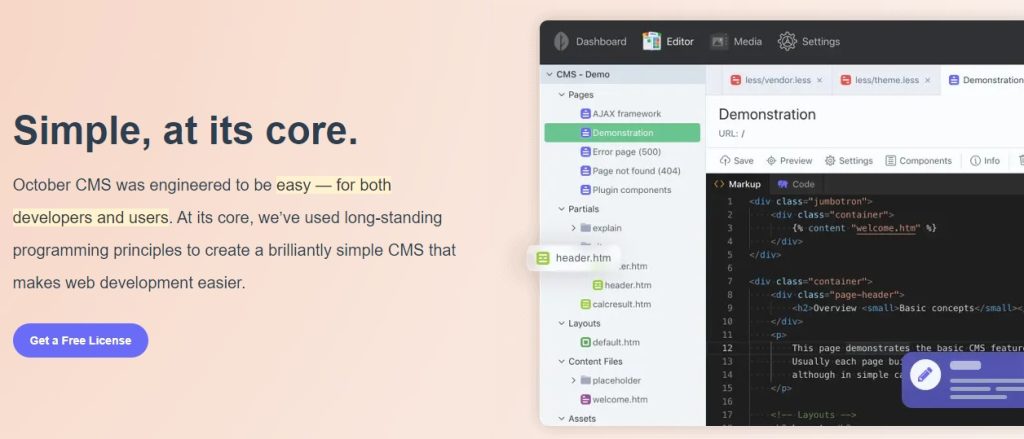
Key Features of Laravel (CMS October):
- Modular Architecture. Laravel’s modular architecture allows businesses to build custom e-commerce solutions by combining pre-built modules and extensions, saving time and resources on development.
- Built-in CMS Functionalities. With CMS October, businesses can manage content, products, and orders from a centralized dashboard without the need for additional plugins or third-party tools.
- Advanced Security Features. Laravel offers built-in security features, such as encryption, authentication, and authorization, to protect sensitive customer data and ensure compliance with data protection regulations.
5. BigCommerce
BigCommerce is a comprehensive e-commerce platform. It helps businesses start, run, and expand their online stores fast. The platform is reliable, boasting 99.99% uptime. It also scales to meet the needs of any business, big or small, across various industries.
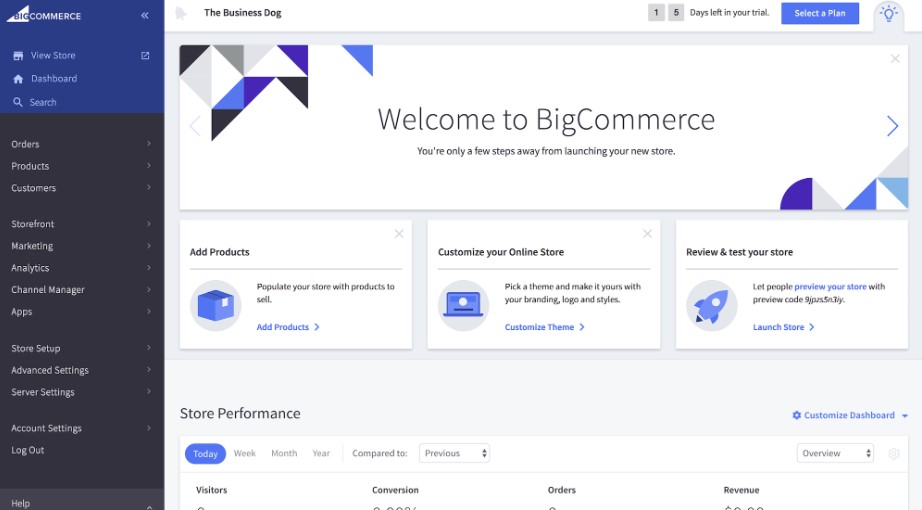
Key Features of BigCommerce:
- SEO and Marketing Features. BigCommerce offers advanced SEO tools, including customizable URLs, meta tags, and rich snippets. To help businesses improve their search engine rankings and drive organic traffic to their online stores.
- Responsive Themes. BigCommerce offers a wide range of responsive themes and templates to choose from.
- Integration with Third-Party Apps. BigCommerce integrates with popular third-party apps and services. Such as payment gateways, shipping providers, and marketing tools, to extend the functionality of web sites and streamline operations.
Stages of developing a B2B e-commerce website
Defining Goals and Objectives
Before starting B2B ecommerce web development, businesses need to set clear goals for their website design that align with their overall business model. Clear goals help companies focus their development work and resources. This focus aims to achieve specific results and make their e-commerce project successful.
Target Audience Analysis
Understanding your B2B website’s target audience is critical. Identify their needs, preferences, and challenges through methods like market research and data analysis. This helps tailor your strategy and features to their unique requirements.
Development of Functional Requirements
Defining functional requirements with stakeholders is crucial for developing a B2B e commerce site. Identify critical features like catalog management, pricing tools, account management, system integrations, and payment options to ensure the site meets business needs and adds customer value. Additionally, ensure compatibility with existing business systems for seamless integration.
Ecommerce Website Design and Development
Designing a B2B e-commerce web site involves creating an intuitive UI and seamless UX tailored to the audience. Focus on a appealing site that reflects your brand, showcases products, and ensures easy navigation. Use modern design principles, responsive techniques, and usability testing for a superior experience across all devices.
Filling the Site with Content
Engaging content is vital for a B2B ecommerce website. Invest in quality product descriptions, specifications, images, videos, and educational content like case studies and testimonials to showcase offerings, build trust, and stand out from competitors.
Testing Online Transactions and Launching the Site
Thorough testing across devices, browsers, and systems is crucial for a B2B website’s functionality, performance, and security. Conduct usability, performance, security, and compatibility tests to meet standards and ensure a seamless experience. After testing, launch the website, monitor its performance, and optimize as needed.
E-commerce Marketing and Promotion
A strong marketing strategy is crucial for site success. To attract and convert leads, utilize SEO, email marketing, social media, content marketing, and PPC. Engage in partnerships, attend events, and network to boost visibility.
To build a successful B2B ecommerce site, focus on clear goals, know your audience, integrate critical features, ensure intuitive design, create compelling content, test thoroughly, and employ a broad marketing approach for impactful results and growth.
B2b Ecommerce Best Practices:
SEO Optimization
SEO (search engine optimization) is essential for enhancing site visibility and attracting organic traffic. Optimize by researching keywords and integrating them into content, tags, and URLs. Create quality content that meets audience needs and improve site speed, mobile friendliness, and user experience to boost rankings and draw more visitors. It is one of the best practices in B2B e-commerce.
UX/UI Design
UX and UI design are critical to B2B e-commerce success, impacting engagement and conversions. Focus on intuitive navigation, clear CTAs, and streamlined checkout for a better user experience. Ensure the site is responsive across devices for a consistent, experience.
Mobile Optimization
Optimizing sites for mobile is crucial for reaching more users and boosting conversions. Focus on mobile responsiveness, quick load times, and designs. Incorporate mobile-specific features like click-to-call, simplified forms, and mobile payment options to improve the shopping experience and drive mobile conversions.
Integration with CRM and ERP Systems
Integrating e-commerce sites with CRM and ERP systems streamlines operations, boosts efficiency, and enhances customer relationships. CRM integration allows for syncing customer data and personalizing marketing. While ERP integration automates order processing, inventory, and fulfillment, reducing errors and optimizing the supply chain.
Customer Data Analytics and Reporting
Using analytics and reporting tools is critical for tracking B2B e-commerce performance and making informed decisions. Monitor KPIs like traffic, conversion rates, and customer retention to assess and improve efforts. Utilize advanced analytics for deeper insights into customer behavior and market trends, helping refine strategies for continuous improvement.
So implementing these practices, including SEO, UX/UI design, mobile optimization, CRM and ERP integration, and data analysis, enhances user experience, boosts conversions, and drives growth, keeping businesses competitive in the B2B market.
Cases of the Best Ecommerce Websites
Examples of B2B Web sites from Different Industries and Lessons Learned
- E-bee Platform. The e-bee platform is an online marketplace for beekeepers and bee enthusiasts. It offers all beekeeping essentials like protective clothing, hive tools, and honey extraction gear. A key feature is its mobile app, which makes it easy for users to access the platform anywhere.
- Rangup Platform. Rangup is a leading e-commerce solution that simplifies payment processes for restaurants and cafes. It makes payments faster and easier for customers. With Rangup, businesses can process payments and split bills among diners. Both merchants and customers can complete transactions, in a few seconds, using POS systems that integrate with Rangup. Rangup also focuses on providing a personalized experience to retain existing customers.
B2B e-commerce development trends
Prospects for the Development of the B2B Market
To thrive in ecommerce, businesses should innovate, adapt to market shifts, and enhance their tech. Emphasizing digital upgrades, cloud solutions, agile methods, and customer focus is critical. Building partnerships and promoting internal collaboration will also drive success. Keeping up with trends and adopting a forward-thinking approach is crucial for growth and competitiveness in the evolving e-commerce space.
New Technologies and Solutions for Ecommerce Platforms
Emerging tech is transforming B2B site, improving customer experiences, supply chain management, and innovation. AI and machine learning personalize recommendations and predict behavior, enhancing shopping experiences. Blockchain improves supply chain transparency, security, and traceability, ensuring product authenticity and compliance.
How to Prepare for the Future of B2B E-commerce?
To thrive in B2B site, businesses should innovate, adapt to market shifts, and enhance their tech. Emphasizing digital upgrades, cloud solutions, agile methods, and customer focus is critical. Building partnerships and promoting internal collaboration will also drive success. Keeping up with trends and adopting a forward-thinking approach is crucial for growth and competitiveness in the evolving space.

Free website strategy session with a senior web expert
For over a decade, we’ve helped startups, SaaS companies, and service brands build high-performing websites that drive real results. Whether you’re planning a redesign, launching a new product, or need to scale your platform—our technical and UX expertise can help you move faster and smarter.
Ready to talk? Connect with a lead developer at Hutko.dev for a FREE 30-minute strategy call. Let’s map out your next step, together.
Book a Free Call




